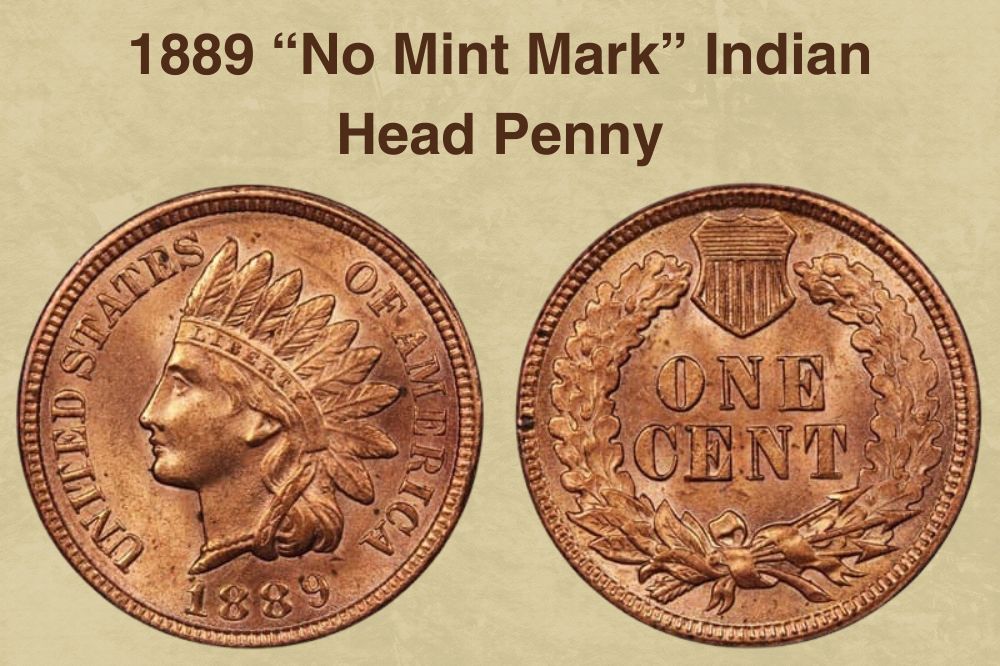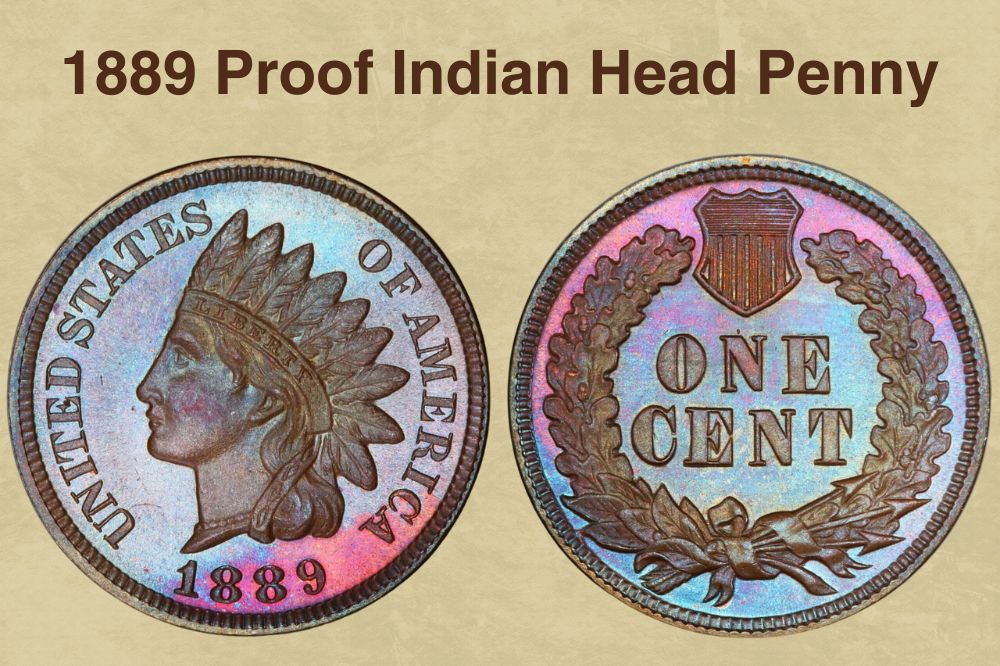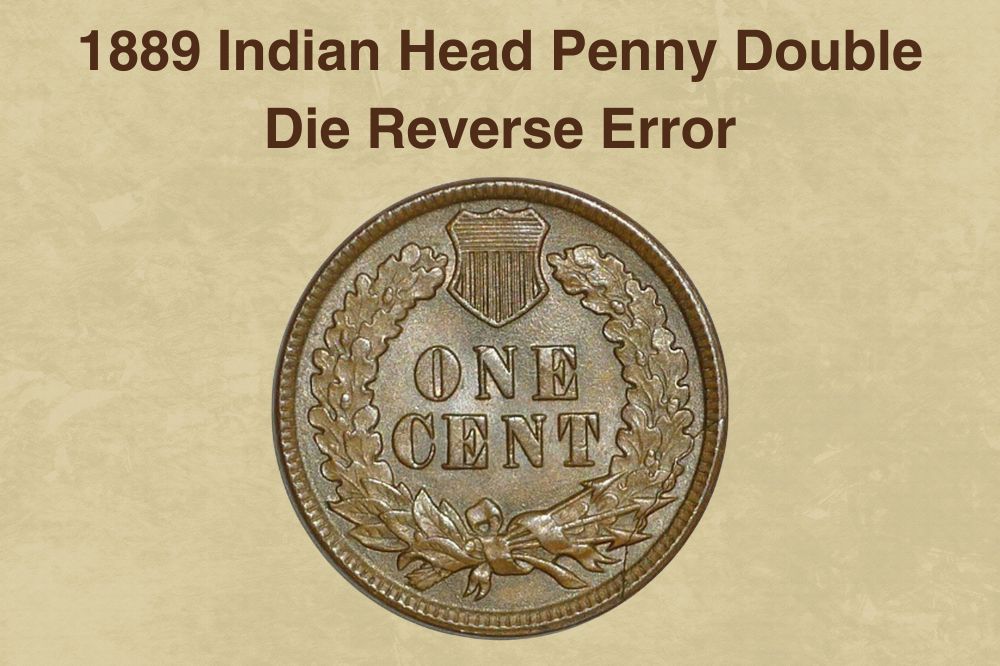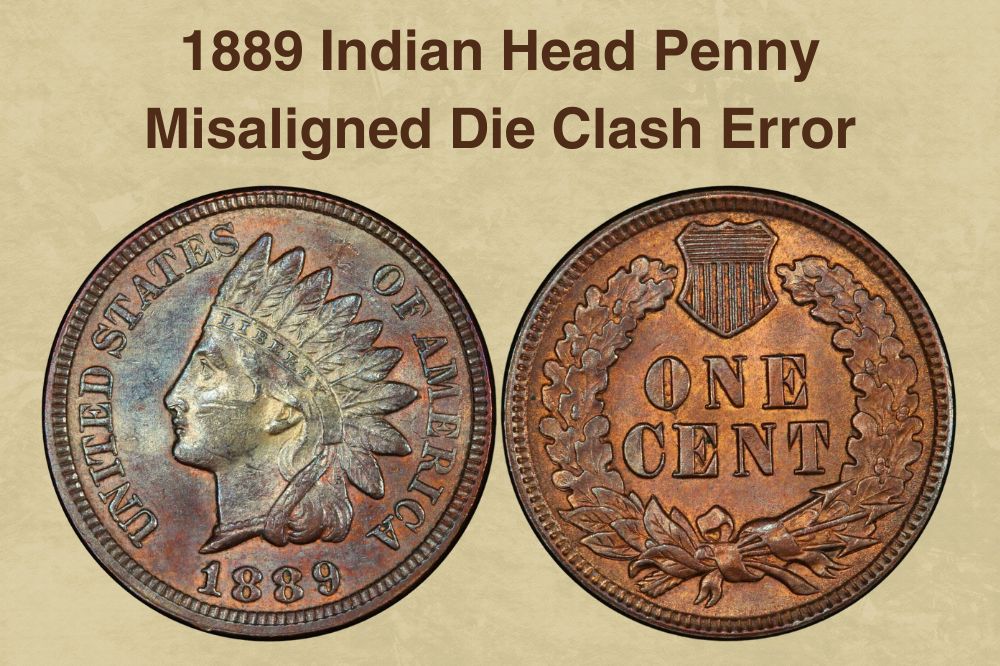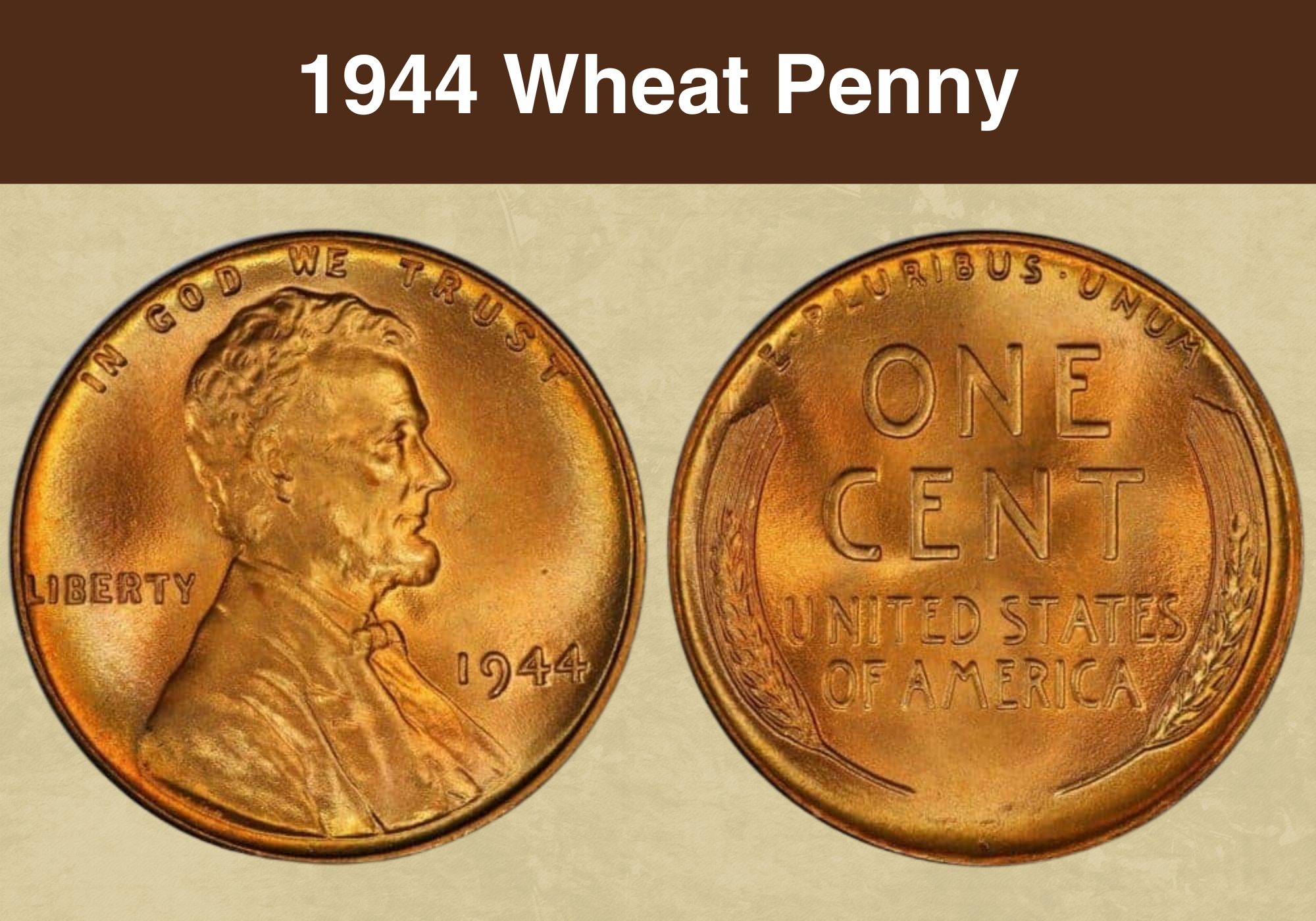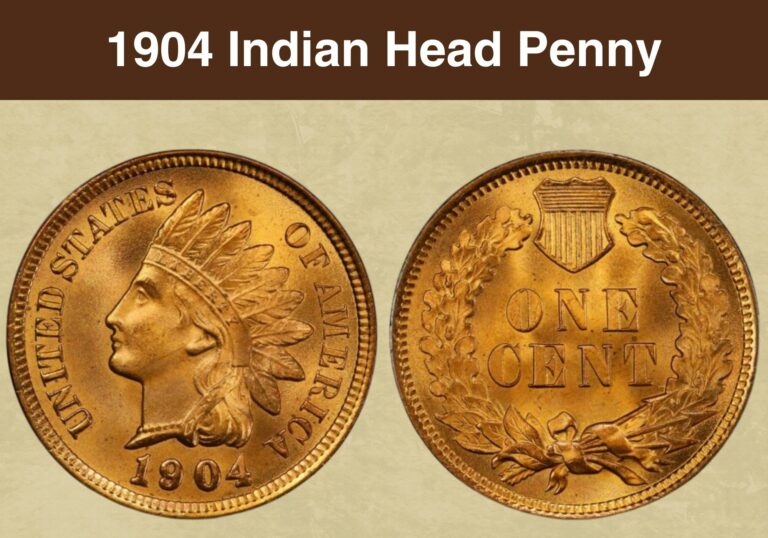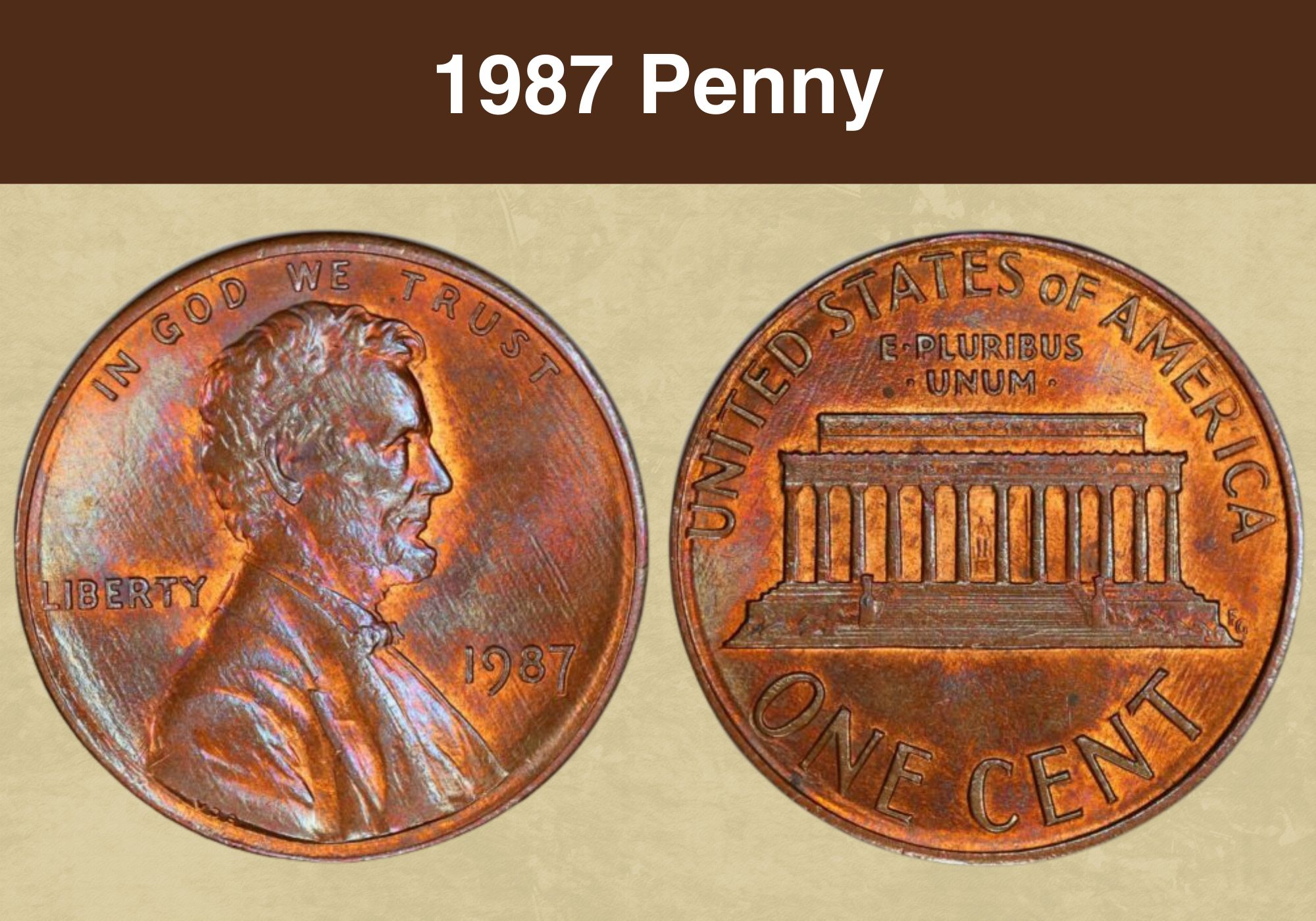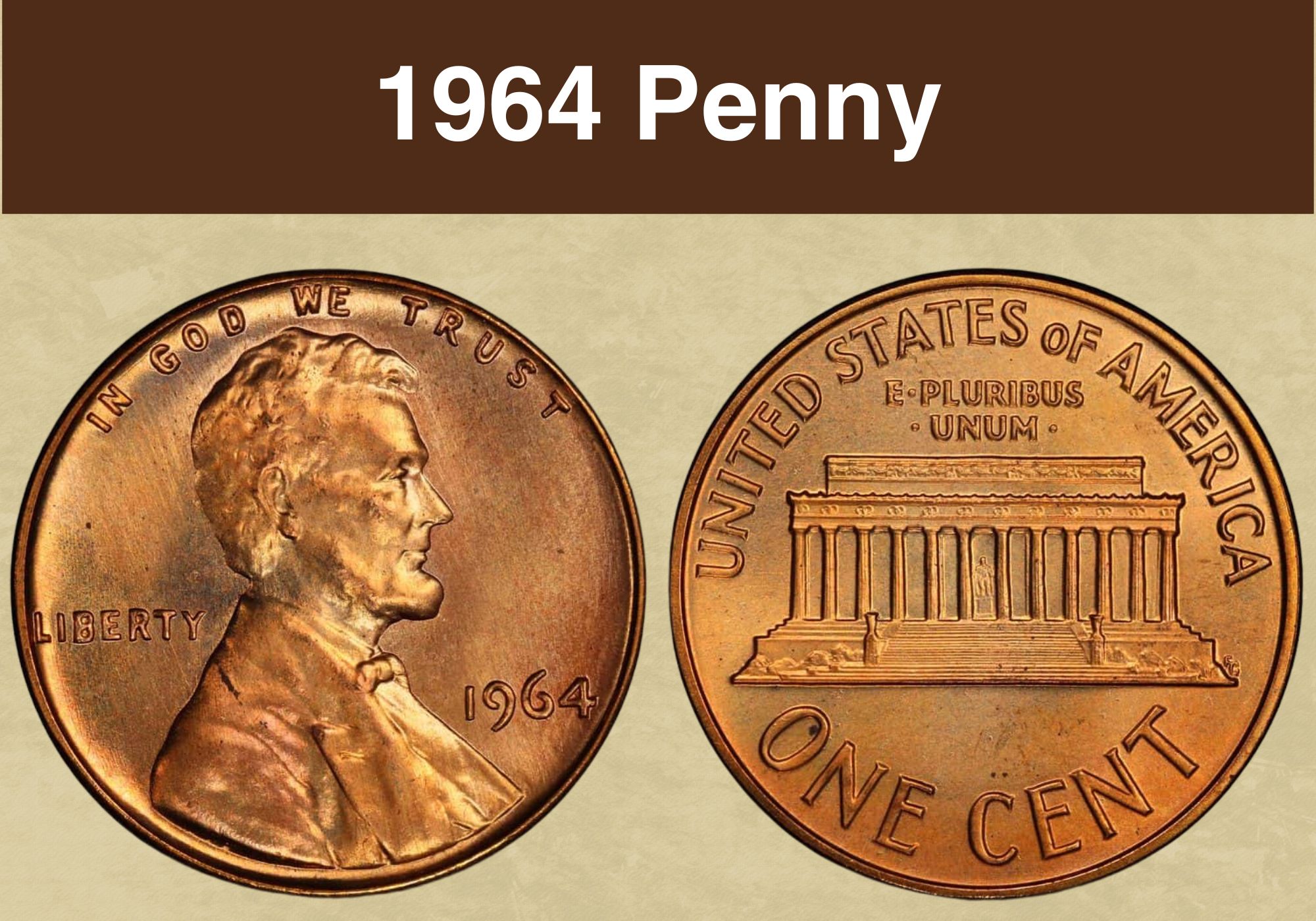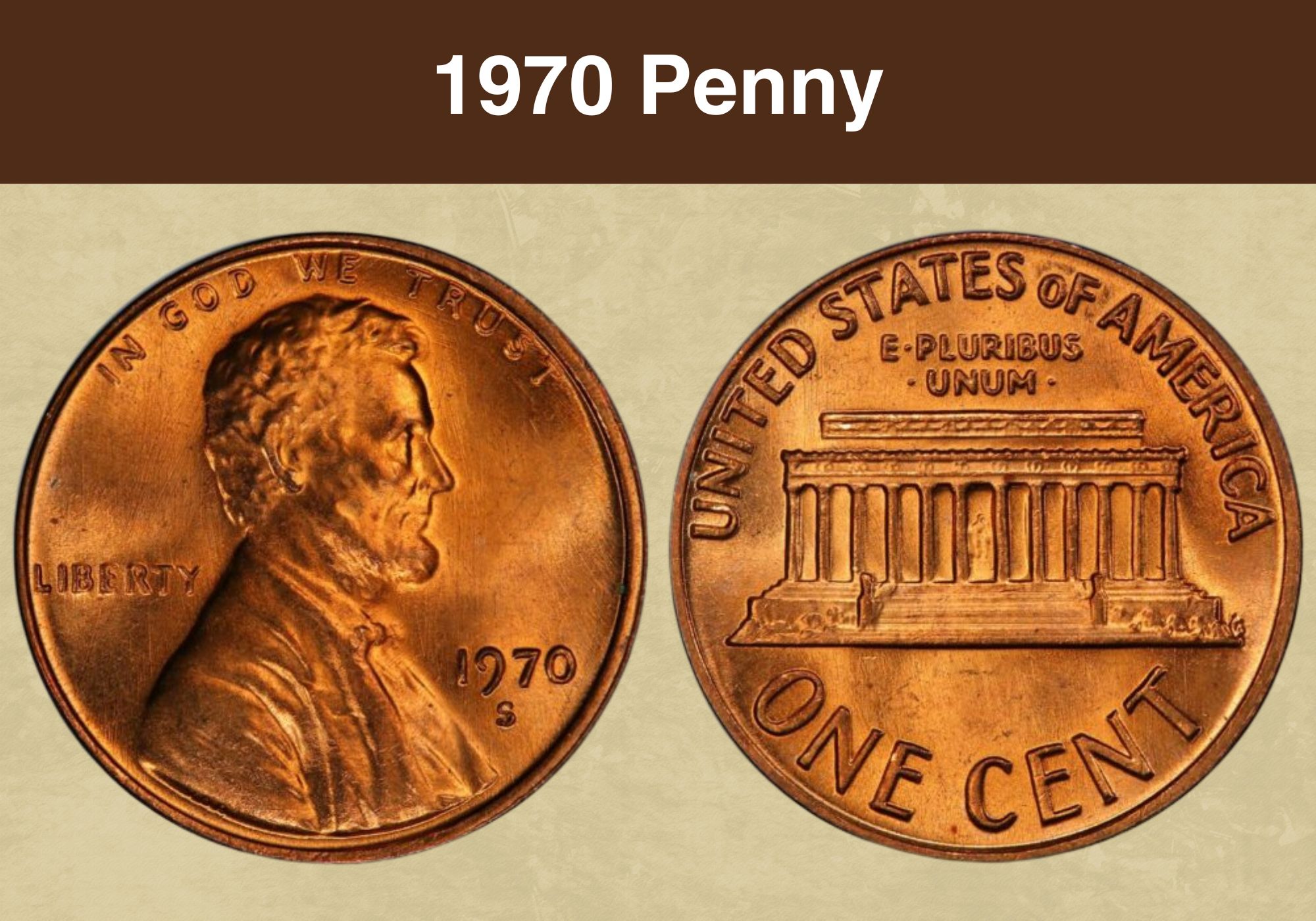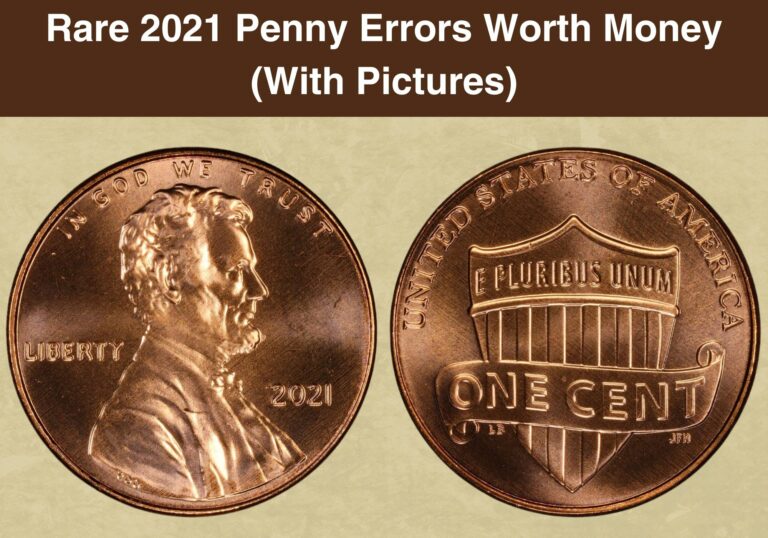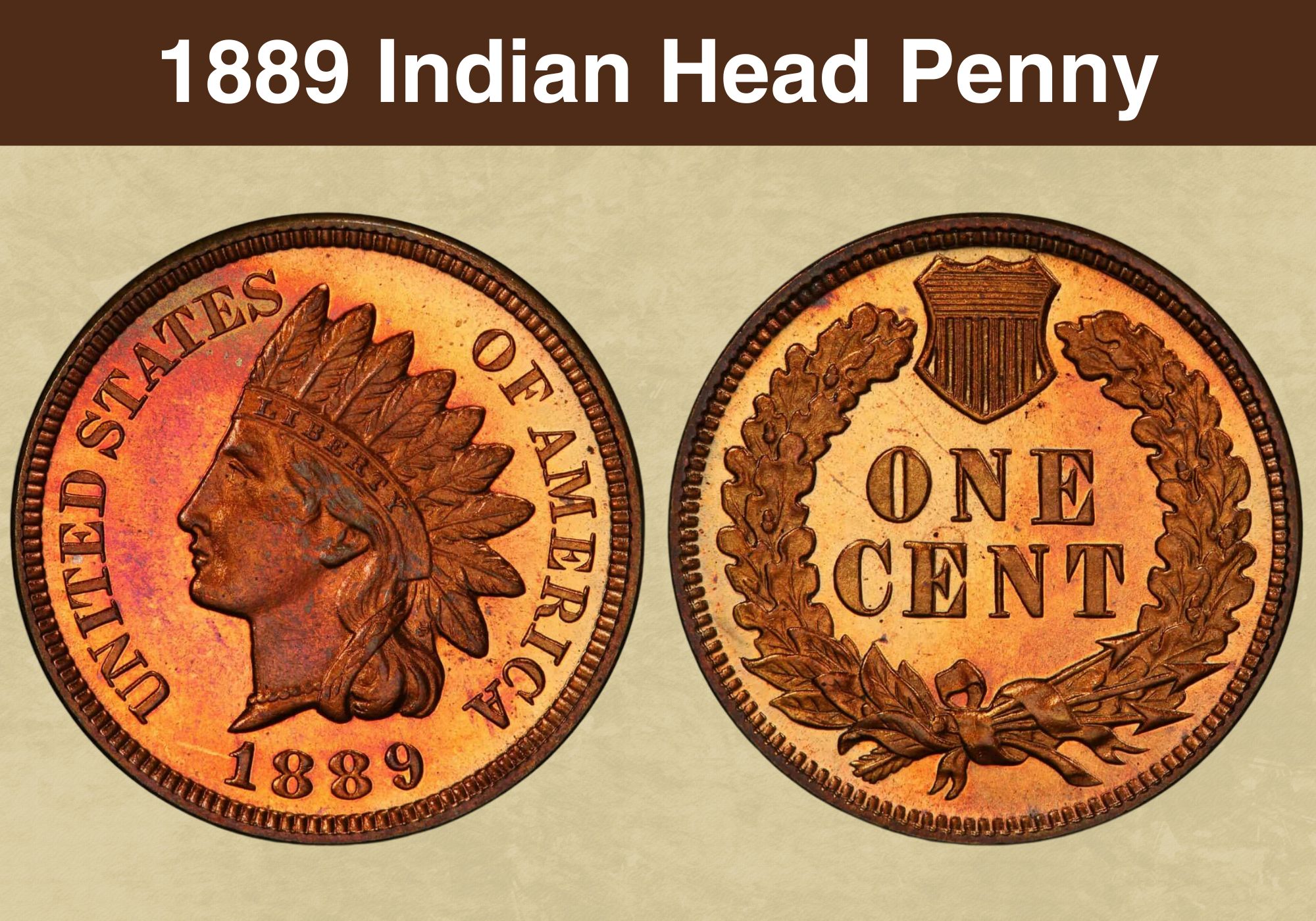
Coin Value Contents Table
Are you interested in completing your Indian Head Penny collection with an aesthetic specimen? Look no further than the 1889 Indian head Penny.
Before the Lincoln Cent, we had the Indian Head Cent produced by the US Mint between 1859 and 1907. Like most coins from the 19th century, the 1889 Indian head penny is relatively rare and valuable among numismatics.
Designed by James B. Longacre, the Indian Head Penny is a truly iconic piece. It embodies fundamental American beliefs through its distinctive design featuring Lady Liberty wearing the customary headgear of the Native Americans.
In this post, we’ll explore the rich history and features of the 1889 Indian Head Penny, plus discuss how factors like condition, grades, variety, and errors affect its value. Don’t forget to check out the frequently asked questions section.
If you are curious to learn more about this iconic piece, join us below!
1889 Indian Head Penny Value Chart |
||||
| Mint Mark | Condition | |||
| Good | Fine | Extremely Fine | Uncirculated | |
| 1889–No Mint Mark Indian Head Penny | $2 | $4 | $15 | $50 – $650 |
| 1889 Proof Indian Head Penny | – | – | – | $250 and above |
1889 Indian Head Penny Grading
For collectors and investors, the condition or grade of the 1889 Indian Head Penny is a crucial factor that determines its worth. Due to the age of this coin and extensive circulation, most pieces are in poor condition.
While the chances of stumbling upon an 1889 Indian Cent in pristine condition is rare, it’s still possible to come across one.
During grading, the 1889 pieces fall into several grading categories depending on their conditions, including:
- Good–This coin is in a rough shape, with deep scratches and blemishes on the surface. The faces of the coin might also appear smoothened out but retain some design outlines.
- Fine– Shows signs of wear, such as scratching or chipping on the obverse and reverse, but maintains sharper features.
- Extremely fine–The coins show signs of light wear, including a few scratches and contact marks. However, the images and lettering remain raised.
- Uncirculated–This piece has never seen circulation. As a result, it still has its original red mint luster, and its design is perfectly intact. But you might see blemishes under magnification or light.
| # | Grade |
|---|---|
| 1 | Basal State-1 |
| 2 | Fair |
| 3 | Very Fair |
| 4, 5, 6 | Good |
| 7, 8, 10 | Very Good |
| 12, 15 | Fine |
| 20, 30 | Very Fine |
| 40 | Extremely Fine |
| 50 | About Uncirculated |
| 60 | Mint State |
| 65 | Mint State |
| 70 | Mint State |
Please check our grading guides to know your coin scale, It’s the necessary step to know the exact value of your coin.
Check out now: How to Grade Indian Head Penny?
1889 “No Mint Mark” Indian Head Penny Value
Without a doubt, the Indian Head Cent is an integral part of American history. Minted during the Civil War, the coin helped spread the nation’s heritage while boosting its economy.
Originally, the copper cent was the size of a half dollar. But the discovery of gold in California caused inflation of copper prices. Being the only profit center for the US Mint, the officials began searching for better alternatives.
In 1857, they opted to reduce the size of the cent and change its composition, leading to a new design for the cent: the Flying Eagle. However, this coin proved hard to produce and lasted one year in circulation (between 1857 and 1858). That’s where the Indian head penny comes in.
The centerpiece of this coin features a bust of Lady Liberty rocking a feathered tiara on the obverse to symbolize freedom and unity. It’s quite fascinating how Chief Engraver, James B. Longacre, successfully blended these two motifs to design such a unique and powerful symbol.
For the reverse, Mint Director James Ross Snowden selected a laurel wreath with a shield. But this design was later replaced by a shield on top of an olive and oak wreath. Numismatics Walter Henry believed Snowden chose this design combination for the Indian Head penny, as it had the lowest relief and a high chance to strike well.
Five years through production, the mint changed the Indian cent composition from copper-nickel (88% copper and 12% nickel) to bronze (95% copper and 5% tin and zinc). This was in response to the constant hoarding of copper and nickel cents amid the economic chaos of the civil war.
An increase of privately issued bronze tokens in the market from 1861 to 1864 also contributed to the change.
The Philadelphia mint struck all the Indian Head Pennies from 1859 to 1907, including 1889 units. As a consequence, these pennies have no mint marks.
In 1889, the mint produced 48,869,361 regular strike Indian Head Pennies, marking the highest mintage of the series in US coinage.
But over 100 years have passed since then, and most 1889 pieces today are either damaged or lost. Let’s not forget these coins are made from copper, which is a highly malleable and degradable metal.
Because of these circumstances, surviving coins have entered the rarity zone. In low grades, 1889 pennies are less valuable, with most costing around $1.5. But as you move to higher grade levels, the rarity and values of these pennies skyrocket.
Pieces in “Good” and “Very Good” condition are slightly hard to come by. On average, they can sell for about $2 and $3. If an 1889–no mint mark penny is graded as Fine, it’s worth around $4 to $8. If it falls into the “Extremely Fine” category, expect it to trade for $15 to $25.
In pristine, uncirculated conditions, the 1889 coins become scarce and typically call for a high ransom. If you have one, you can sell it for around $50 to $650. However, if the specimen has a fully red surface, it can fetch a higher price tag.
Examples in MS64 to MS66 with Red Brown luster can fetch as much as $1,300 in the open market. But collectors can pay even $17,000 for those with an undisturbed red luster since only 1,000 examples exist with higher grades (MS64 and above).
Today, you can shop for 1889–no mint mark Indian Head Pennies from pawnshops and online sites like eBay. These places stock coins made by the US Mint in the 19th and 20th centuries. But before buying a valuable penny, ensure it is graded and authenticated by a reputable grading service.
1889 Proof Indian Head Penny Value
Besides regular strike pennies, the Philadelphia Mint also produced 3,336 proof 1889 Indian head pennies. These pieces have a mirror-like finish and sharp design details to catch the eye of collectors and investors.
Only a few factions of these proof pennies survive, with rare specimens setting back collectors thousands of dollars. In PR63 state, an 1889-proof penny sells for around $475. But in higher grade levels, such a piece can reach upwards of $9,000.
Also read: 12 Most Valuable Lincoln Penny Worth Money
Rare 1889 Indian Head Error List
Every numismatic understands that coins with distinct production errors often create intense demand and trade for substantial prices on open auction markets. Since the planchets used by the Mint in 1889 tended to produce streaks, this date is not free from errors and varieties. One example of these errors is the double-die reverse. Let’s check it out!
1889 Indian Head Penny Double Die Reverse Error
The 1889 Indian head penny double die reverse error is a pretty cool and highly sought-after variation of this century-old coin.
So, what is it exactly?
During the minting process, mistakes are common. For example, the die used to stamp the design on the reverse of the coin can accidentally strike the coin twice or thrice, resulting in double design elements. Regions mostly affected by this error include lettering and the wreath in 1889 pennies.
But remember, the double die reverse error varies between coins. The coin’s value depends on the degree of doubling and its condition.
If you happen to find an 1889 Indian Head Penny with this error in a perfect, uncirculated state, expect it to sell for $190 or more in the open market. But ensure you deal with a reputable dealer to get certified examples of this variety.
1889 Indian Head Penny Misaligned Die Clash Error
Another interesting error coin is the 1889 Indian Head Penny, with a misaligned die clash. It’s a fascinating error that can catch the attention of any seasonal collector.
It occurs when the dies used to strike the obverse and reverse of the coin do not align correctly, resulting in misaligned design elements on the coin’s surface.
While this error coin is not the rarest in the market, it can still demand a high premium, especially in excellent condition. In 2021, a numismatic paid $423 for this variety. So, keep an eye out for this example because it can make an exciting addition to your Indian Head collection set.
1889 Indian Head Penny Re-Punched Date Error
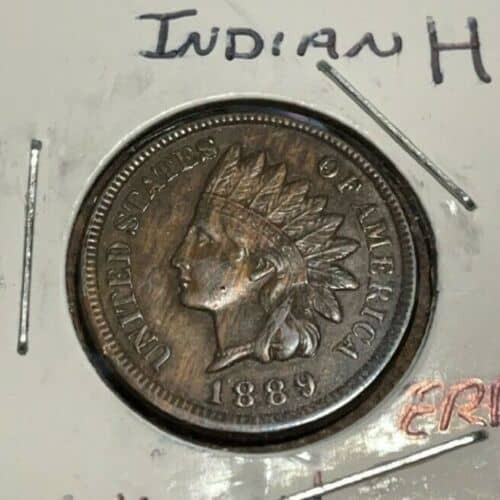
As the name suggests, this error happens when the date gets re-punched on the obverse of the 1889 Indian Head Penny. During production, the die used to strike the date on the coin might get misaligned. Consequently, the date gets punched again on the correct section of the penny’s surface.
In this error coin, you might observe doubling or tiny marks left over on the number “8” on the date. While most re-punched date errors are quite noticeable, some may only be visible under a coin microscope.
Indian Head Cents with re-punched date errors might prove hard to find and can fetch a substantial amount on the market. Another thing, their value increases depending on their condition and rarity.
Besides these, be on the lookout for common Indian Head Penny errors, including:
- Displaced minting: This error occurs during minting, where the design of the coin gets displaced from its original position. The coin’s value will depend on the degree of misplacement, plus its condition or grade.
- Die gouge: The die gouge error results from a faulty die. If the coin gets struck with this die, it might feature a raised area, corresponding to the gouge on the die’s surface.
- Double-struck: Here, the coin features a partial or full imprint of the previously struck design.
Also read: 17 Most Valuable Indian Head Penny Worth Money
Where to Sell Your 1889 Indian Head Penny ?
Now that you know the value of your coins, do you know where to sell those coins online easily? Don’t worry, I’ve compiled a list of these sites, including their introduction, pros, and cons.
Check out now: Best Places To Sell Coins Online (Pros & Cons)
1889 Indian Head FAQs
What is the value of an 1889 Indian Head Penny?
As mentioned above, the value of the 1889 Indian Head Cent varies depending on several factors, including rarity, condition, and grade. Examples in good condition can sell anywhere from $2 to $3.
Those classified as fine and extremely fine cost between $4 and $25. In uncirculated condition, expect an 1889 penny to fetch a huge ransom, ranging from $30 to $100. However, perfect pieces with red luster and graded at a mint state usually trade for a significant amount, with examples trading for as much as $17,000.
And of course, 1889-proof pennies and error coins demand a higher price tag than regular strike specimens.
Does the 1889 Indian head penny have mint mark varieties?
No! All Indian Head Pennies got minted from the Philadelphia Mint, including the 1889 units. As such, these coins come with no mint marks.
Also read: 13 Most Valuable Wheat Penny Worth Money
Should I clean my Indian head penny?
Most 1889 pennies might have dirt on them, considering they’ve been in circulation for over 100 years. So, you might get tempted to clean them. However, experts caution collectors against cleaning rare pennies because it can reduce their value significantly. Many cleaned pieces have a fine appearance but fetch a low value compared to uncleaned examples.
If you can’t stand adding dirty coins to your collection, go online and search for effective ways to remove dirt or residues from coins. For example, you can use a soft cloth dipped in soapy water to remove the blemishes gently.
But under no circumstance should you use abrasive methods to clean your iconic coin. The reason is, they might leave your specimen corroded or degraded. If you ever need to clean a penny, consult a coin specialist before doing anything.
Which year produced the most valuable batch of Indian head pennies?
With a mintage of 852,500 units, the 1887 Indian Head Penny is considered the rarest and most valuable date in the series. These pieces are highly sought after by investors and collectors alike, with circulated pieces in average conditions selling for around $900.
Another key date worth checking out includes the 1889 Indian Head Pennies. The rarest variety of this penny features a small bump sticking out from the lower-left corner of the numeral “8” in the date.
Also read: 11 Most Valuable Wheat Penny Errors

